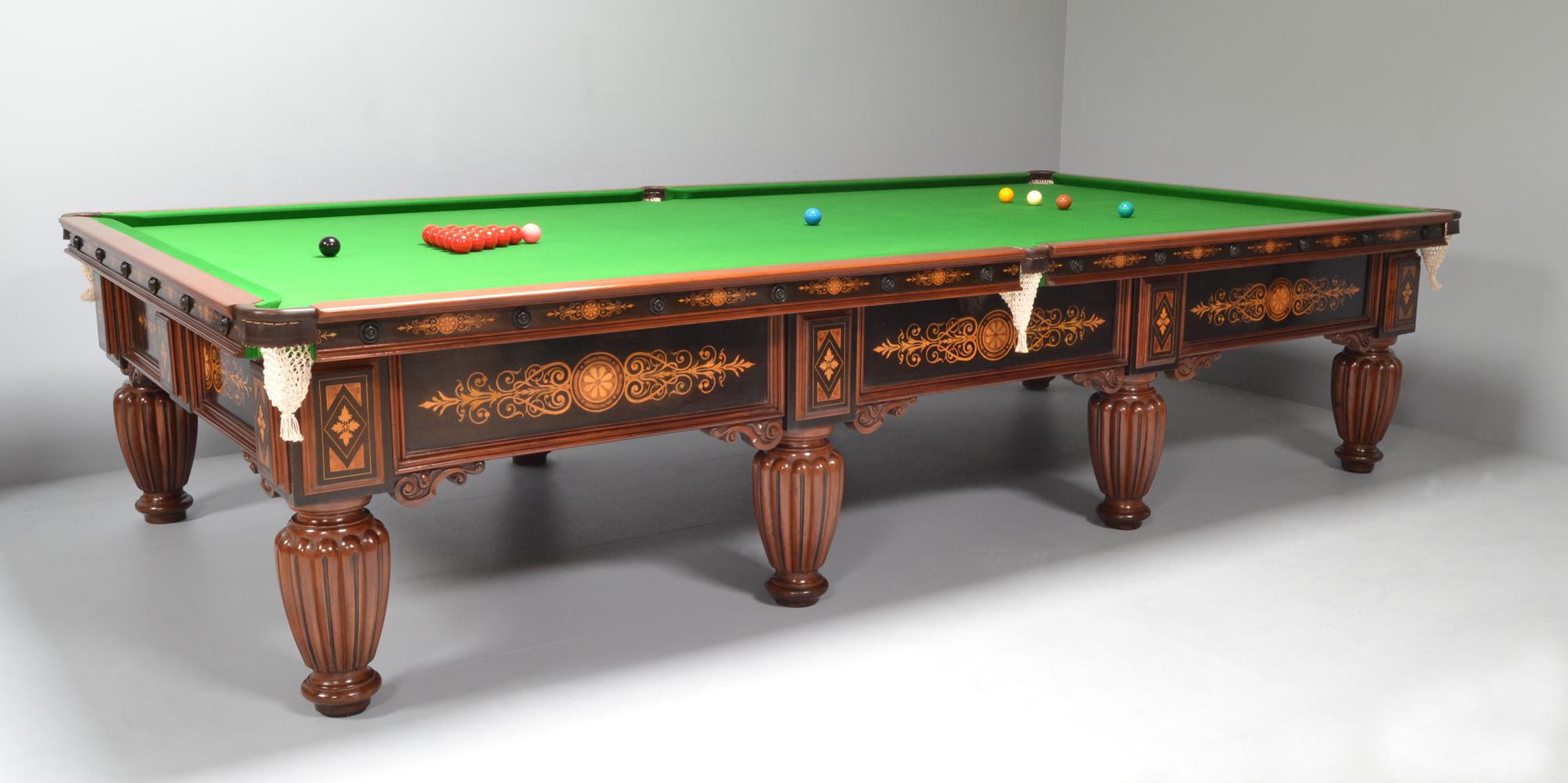FAQ
Please find below answers to the most frequently asked questions and feel free to contact us if you have any other questions.
During the early Victorian era Billiards was played on a "Billiard table", Snooker had not yet been invented but became popular in the 1930’s and was played on the same table.
Due to the rise and subsequent dominance of Snooker as the main cue sport the phrase “Snooker table” has become synonymous with the game, "Snooker" is played on a standard billiard table.
English billiards, called simply billiards in the United Kingdom and in many former British Colonies is a cue sport that combines the aspects of Carom Billiards and Pool.
The history of Billiards on a European scale includes many countries and its exact origins are unclear but the earliest refences to the Game in Europe occur in the 15th century.
It seems that Snooker was the organic creation by a young officer serving with the 11th Regiment (now the Devonshire's) in India at Jubbulpore in 1875.
Apparently a popular game in the Officers Mess at the time was called Black Pool, this young subaltern suggested adding another coloured ball to the game,gradually more coloured balls were added, and so the game of snooker was invented.
It was probably at this time relatively easy to add additional balls of other colours, as they would be made of Ivory, and Ivory is easily stained to almost any required colour.
Other popular games at this time were Pyramid Pool which simply used 15 reds in a triangle formation with a cue ball, and Life Pool in which every player used a coloured ball as a cue ball, so it seems that being bored with one of the games necessitated a new game.
The man who added the coloured ball to the game of Black Pool was Colonel Sir Neville Chamberlain who died as recently as 1944 at the age of 88.
The word or name "Snooker" was evidently a word or derogatory term used by army officers who referred to First Year Officer Cadets at the Royal Military Academy at Woolwich as being "Snookers".
Understandably this new game was spread by the army officers from India to England when they returned home - this taking place during the 1880's, and of course this new game was also taken from one officers mess to another by Sir Neville Chamberlain and others whenever there were posted, to a new station.
Full size 12ft x 6ft tables are the preffered choice for professional players ,country estates and gentleman clubs.
In response to invitations several Billiards Traders prepared and submitted models of a proposed Standard Size of Billiards Table and at a meeting on 28th April 1891 the Billiards Association selected a "Thurston's" table as the true size.
During the Victorian era Billiard and Snooker popularity spread into suburbia and so the need for smaller tables in town houses increased.
Consequently many manufacturers produced 3/4 tables in various sizes for the home market.
Today we supply many antique 3/4 tables to private clients, Pool is a popular game and this size table facilitates the game very well.
A Snooker or billiard cue measures 58", if we round this up to 60" to allow for back swing it equates to 5ft.
If we simply double up this measurement to 10ft and add on the table size this gives the minimum room size, see chart below
Table version Size in feet Room size in feet
| 12' (full) | 12' x 6' | 22' x 16' |
| 10' | 10' x 5' | 20' x 15' |
| 9' | 9' x 4½' | 19' x 14½' |
| 8' | 8' x 4' | 18' x 14' |
The table should be brushed after every game and ironed perhaps once a week, always brush the cushions first and brush them in order, then you can brush the bed of the table.
You must brush with the nap or pile of the cloth not against it.
This will help the table run smoother and get rid of unwanted chalk marks, (these can affect bounces and cause kicks on fine cloths) dust and anything else that gets on the bed.
This video link below will help to explain how to brush the table.
We are able to recover , details to follow
No Results Found

